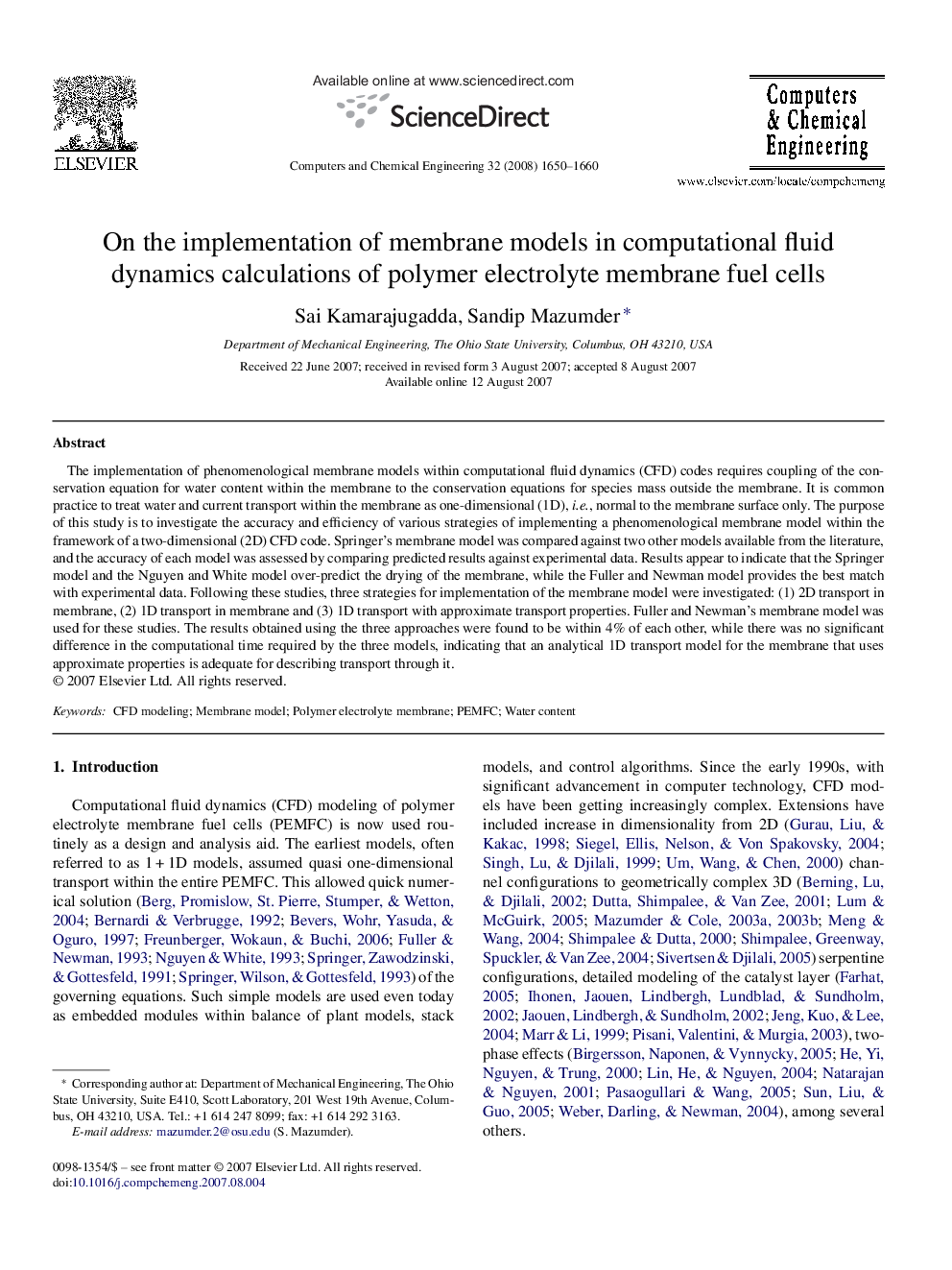| Article ID | Journal | Published Year | Pages | File Type |
|---|---|---|---|---|
| 173626 | Computers & Chemical Engineering | 2008 | 11 Pages |
The implementation of phenomenological membrane models within computational fluid dynamics (CFD) codes requires coupling of the conservation equation for water content within the membrane to the conservation equations for species mass outside the membrane. It is common practice to treat water and current transport within the membrane as one-dimensional (1D), i.e., normal to the membrane surface only. The purpose of this study is to investigate the accuracy and efficiency of various strategies of implementing a phenomenological membrane model within the framework of a two-dimensional (2D) CFD code. Springer's membrane model was compared against two other models available from the literature, and the accuracy of each model was assessed by comparing predicted results against experimental data. Results appear to indicate that the Springer model and the Nguyen and White model over-predict the drying of the membrane, while the Fuller and Newman model provides the best match with experimental data. Following these studies, three strategies for implementation of the membrane model were investigated: (1) 2D transport in membrane, (2) 1D transport in membrane and (3) 1D transport with approximate transport properties. Fuller and Newman's membrane model was used for these studies. The results obtained using the three approaches were found to be within 4% of each other, while there was no significant difference in the computational time required by the three models, indicating that an analytical 1D transport model for the membrane that uses approximate properties is adequate for describing transport through it.
